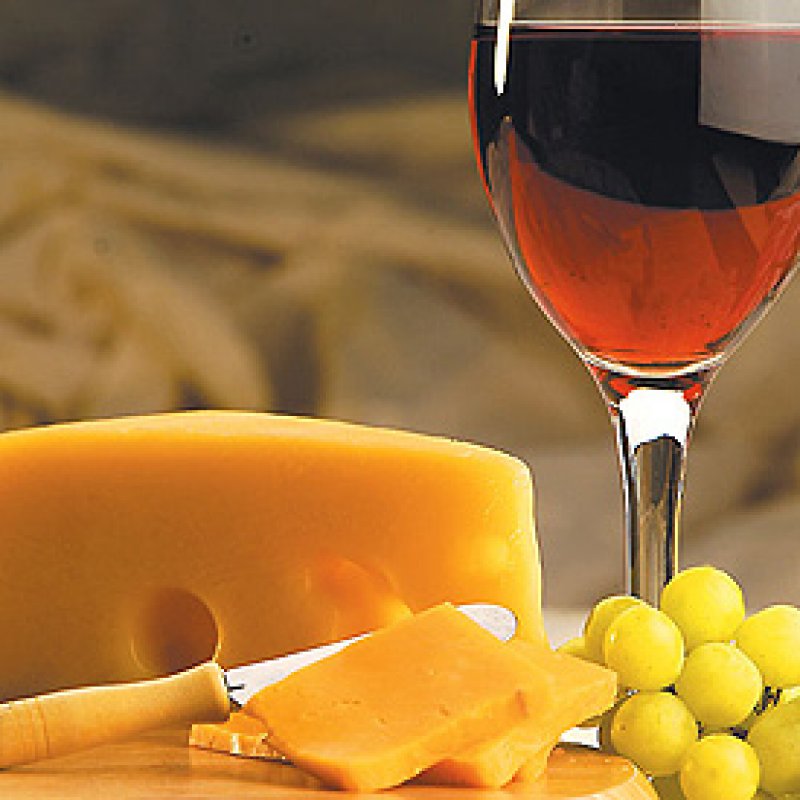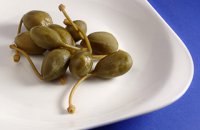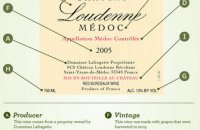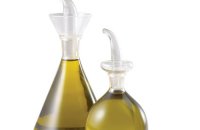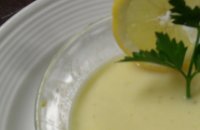The first general rule is to simply combine the mild with the strong. In other words, choose an undistinguished cheese for a great wine, and then vice versa – a strong cheese with a middle-of-the-road wine. If you wish to move on to a more complicated level of gastronomy, you must be able to categorize your cheese and wine. First, there are the fresh white cheeses, which are often slightly acidic, very creamy, and fairly salty. Next, are mature yellow cheeses, which tend to be rich, with a mature, quite salty taste. Finally, there are strong cheeses, with a peppery taste and an intense saltiness.
Of course, wine can be roughly divided into the whites, with their rich floral bouquets, good acidity, and refreshing tastes, and then the aromatic reds, which can be characterized by their profound flavors of spices, forest fruits, chocolate, and soils. There are also the sparkling wines, with their refreshing bubbles and the aromas of white wine and, finally, sweet wines, which taste of honey, fresh grapes and smooth chocolate.Once you have categorized your products, there are two general rules for combining them. Either match like with like (acidity with acidity, for example), or put together two contrasting characteristics – such as creaminess with acidity.
In other words, a fresh white cheese with a sour taste goes nicely with a Santorini Athiri, a Sauvignon Blanc, a Savvatiano, or a Roditis. Alternatively, a very creamy white cheese such as fresh Macedonian manouri can be best enjoyed when washed down with a young red, such as a Xinomavro. Yellow cheeses, with their high fat content, can be perfectly complemented by acidic reds with their smooth, spicy flavors. Finally, strong pungent cheeses need something sweet to accompany them. Perhaps try Sifnos manoura with sweet Samos wine, or an aged Cretan manouri with sweet wine from the island’s Toplou Monastery.
When cheese is cooked, however, its character changes completely, and it is therefore necessary to search among a broad range of drinks in order to find your cheese the ideal partner. As far as the classic combination of cheese and wine is concerned, a feta cheese pie (or “tiropita” as the Greeks would call it) goes well with a Cephalonia Robola. If your pastitsio (a Greek dish similar to lasagna) has a fair amount of cheese in it, choose an aromatic white.
Nevertheless, nothing goes better with fried Macedonian bantzo than a Macedonian tsipouro. Similarly, cheese pie made with béchamel and a variety cheeses is absolutely perfect when washed down with a beer – especially in the summer.
However much I love my wine and liquor, I have to confess that, with a bougatsa (a cream pie) full of myzithra and sprinkled with cinnamon and sugar, milk goes better than any alcoholic drink. And although this is bordering on heresy for a Greek, one of my favorite combinations is cheese with jam, particularly when made from soft fruits. A mild full-fat myzithra, for example, is wonderful with orange syrup. Bitter wild chicory, doused in olive oil and lemon is lovely with a good slice of hard, pungent feta- no drink necessary.
So you see, despite my preoccupation with wine, I approach the issue of what to drink with cheese with a certain freedom that has more to do with finding the best possible marriage of tastes on the palate than with a fanatical attachment to cheese and wine. That having been said, the pleasure afforded by a good wedge of Roquefort and a glass of Chateau d’Yquem, a Cabernet Sauvignon and a Camembert, a hard, pungent feta with an aggressive retsina, and a Mestovo graviera with a Merlot is second to none. Try your own combinations based on some of this handy knowledge, but, more importantly, on your personal taste.
How to Combine Wine and Cheese
Just as the marriage of two powerful characters can all too often lead to a swift and acrimonious divorce, the same is true of wine and cheese.
Country:
Category:
Related Articles
Most Popular recipes













































